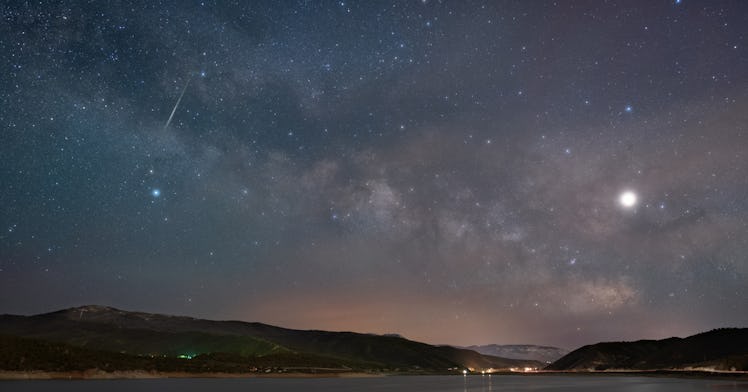How To Watch a Halley’s Comet Meteor Shower This Week
Trade the streaming video and claustrophobia of quarantine for a natural light show amidst the vastness of space.

There’s never a bad time for a meteor shower, but a global pandemic might be one of the best times. If you’re feeling claustrophobic at home and burned out on streaming, staring at the vast expanses of space in wonder could be just what the doctor ordered in addition to wearing masks and washing hands.
Thankfully, Mother Nature is happy to oblige. Early tomorrow (Tuesday) morning, the Eta Aquarids meteor shower will give stargazers a show worth watching, with about 10 meteors per hour expected to be visible at its peak in the Northern Hemisphere.
The annual shower happens when the Earth passes through the debris trail left behind by Halley’s Comet. Their speed — 148,000 mph, according to NASA — makes them fast-traveling meteors, which means that they produce incandescent trains of debris that can last anywhere from several seconds to minutes when they collide with the Earth’s atmosphere.
To get the best views of the shower, find a spot far away from city and street lights, lie back with your feet facing east, look up, and wait half an hour for your eyes to adjust. You should be able to see plenty of meteors, including so-called “earthgrazers” that appear as though they skim the Earth’s surface at the horizon.
If you’re a slightly savvier stargazer, look for Aquarius in the night sky. One of the stars that make up that constellation, Eta Aquarii, is the radiant of the Eta Aquarids, which means that from the perspective of someone on our planet it look like the source of the shower.
Alas, Halley’s comet itself won’t be making an appearance, but the show will still be well worth it for astronomically inclined families. And it’s not due for another viewing from Earth until 2061 anyways, so the Eta Aquarids are a nice way to pass the time until then.
Even when things aren’t looking up, you can still look up!
This article was originally published on